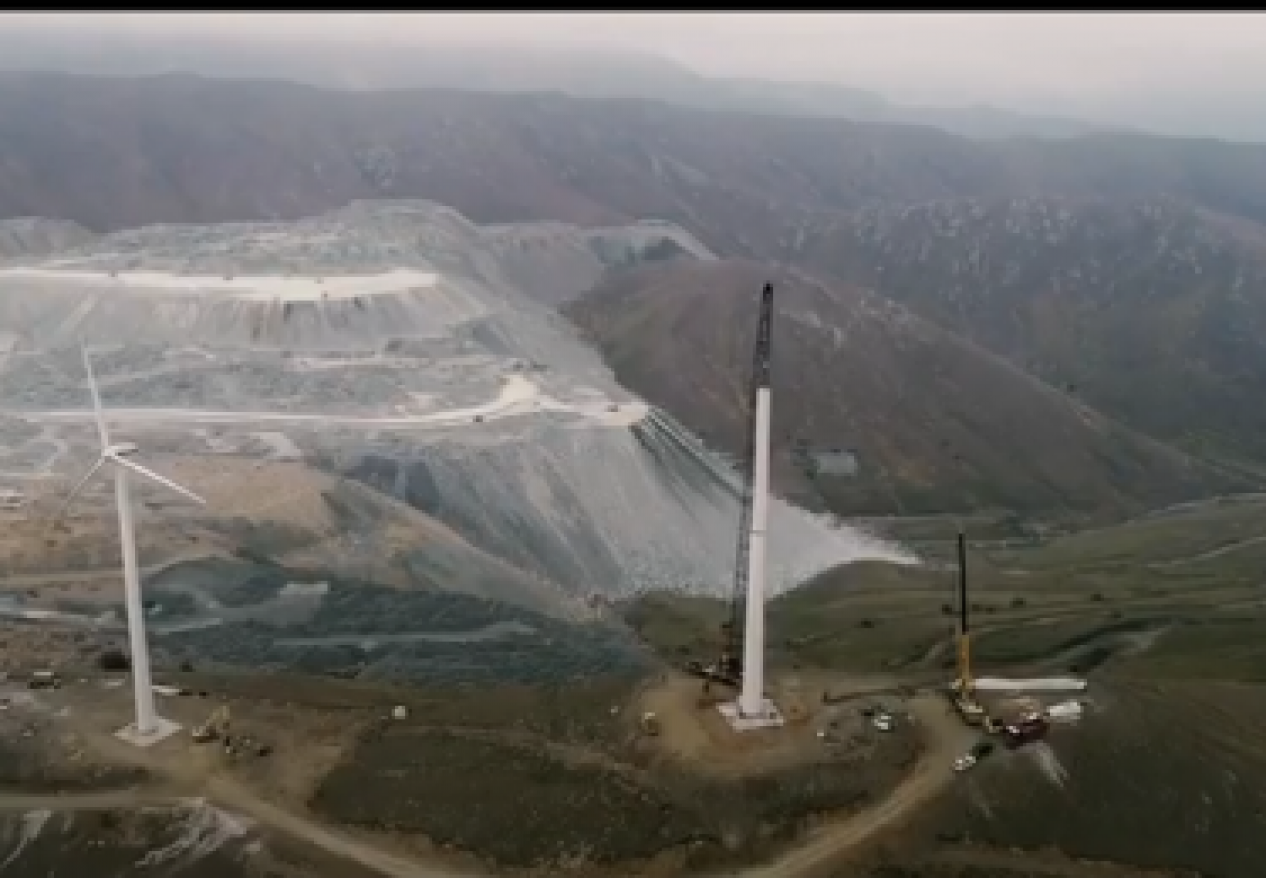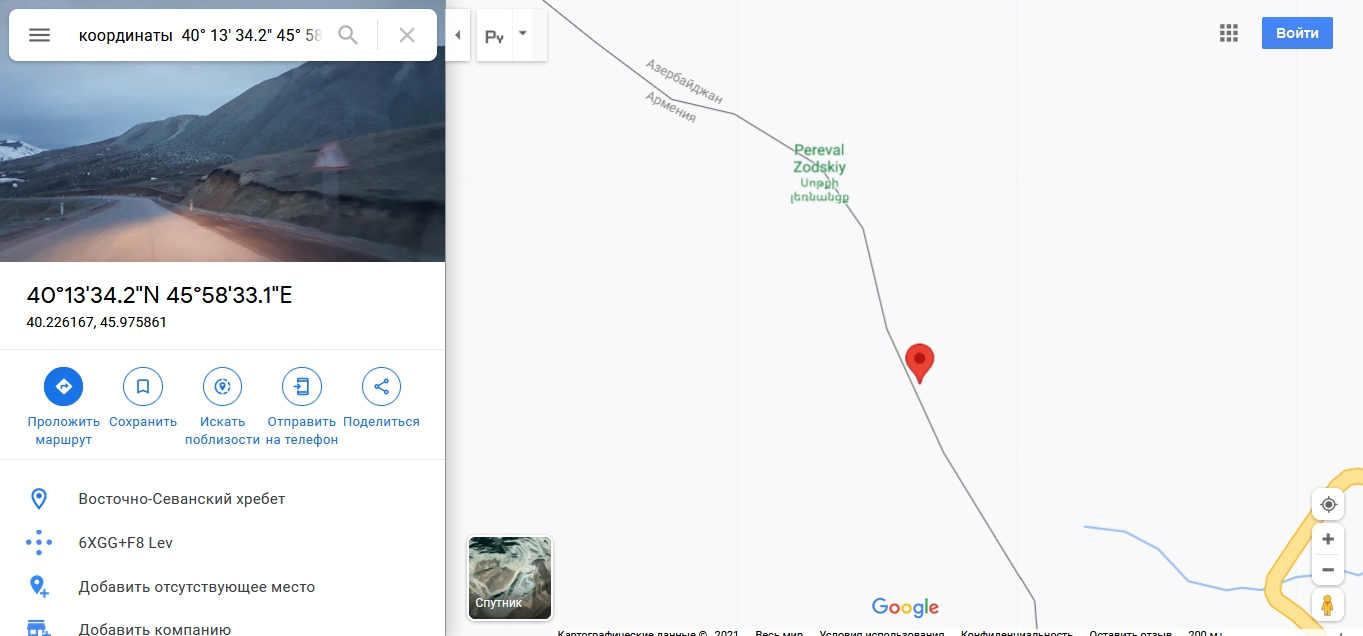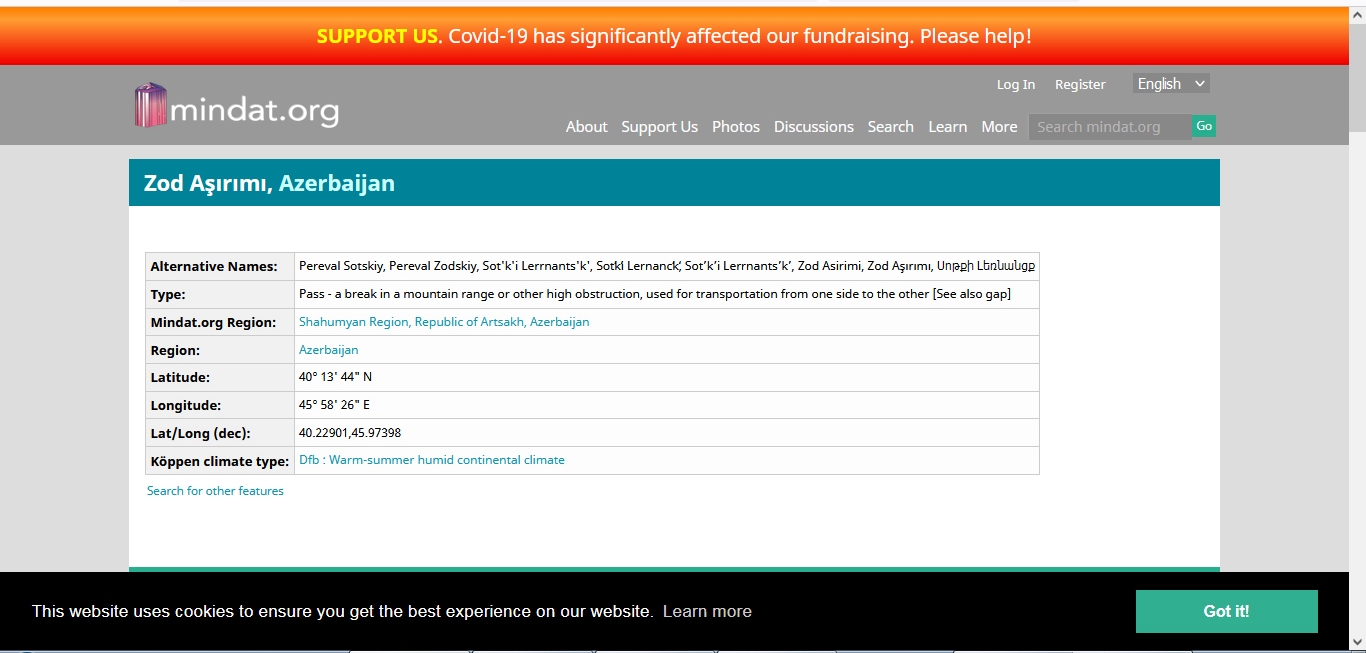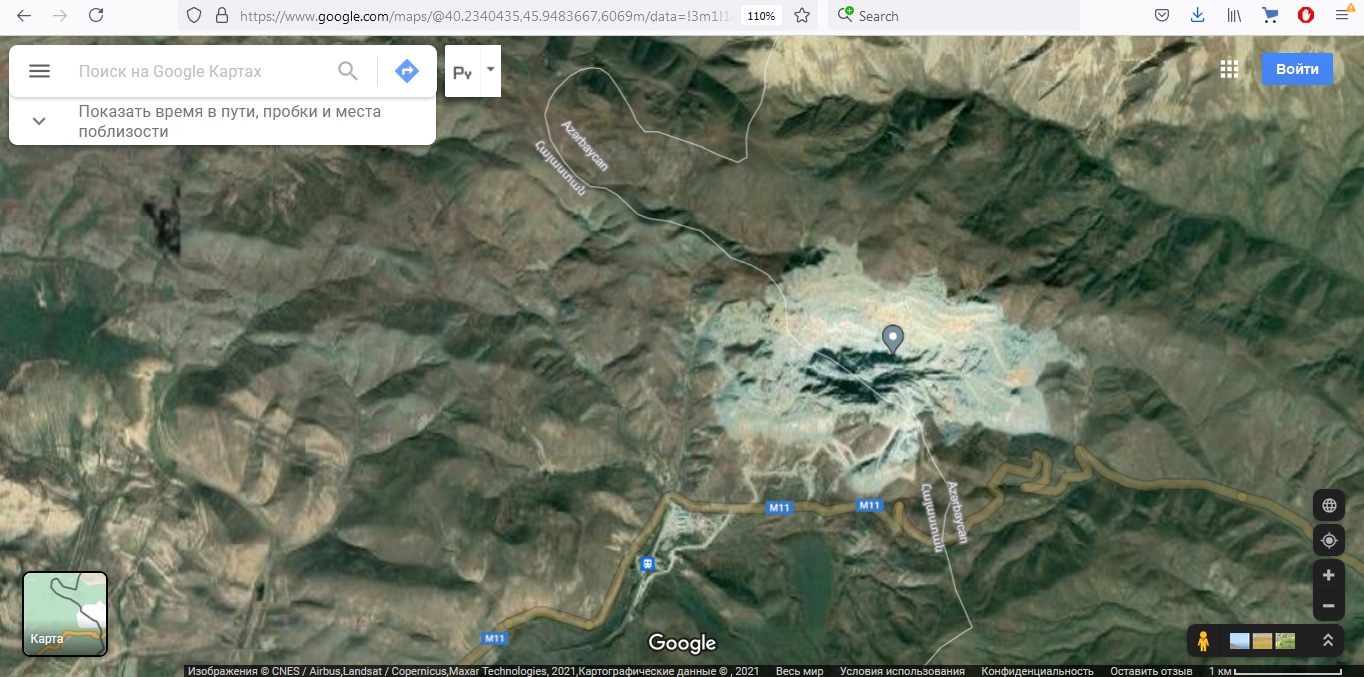
Ombudsman of Armenia Arman Tatoyan has published yet another “proof” of the deployment and fortification works of the Azerbaijani Armed Forces near the settlements of the Gegharkunik region of Armenia.
On his Facebook page, Tatoyan reported the damage done to Zod Wind, which owns a wind farm in Sotk region. The Azerbaijani Armed Forces are deployed on the territory of Zod Wind with their equipment, in fact, depriving it of 200 hectares of land and wind turbines. The Ombudsman of Armenia writes that “because of the illegal deployment of the Azerbaijani military, regular shelling, the life and safety of the civilian population is under threat.” Tatoyan intends to send information on this to international institutions, government agencies and public organizations of Armenia.
Earlier, the founder of Zod Wind Sergey Azaryan, in an interview with Sputnik Armenia, said that the company had filed a lawsuit with the Administrative Court against the government, demanding compensation in the amount of $5 million for failing to protect the business. Tatoyan reminded that by the decision of the government, the company received an area of 200 hectares at the Sotk Pass of Gegharkunik region and it was registered in the cadastre. Two wind power plants were installed on 75 hectares of Zod Wind. At the same time, both the territory and the license for the production of electricity were provided to the company for a period of 30 years - until April 26, 2048.
Faktyoxla Lab. has tried to figure out how plausible are Arman Tatoyan’s statements about the illegality of the deployment of Azerbaijani soldiers on the territory of Zod Wind, where the Zod (Soyudlu) gold deposit is located and where in fact he built his Zod Wind turbines - in Armenia or Azerbaijan.
Indeed, the company Zod Wind, operating in Sotk (Zod), filed a lawsuit against the Armenian government for failing to protect the business from the "invasion" of the Armed Forces of Azerbaijan. The company claims $5 million in compensation for its investment.
This company carried out illegal work in the occupied territory of the Kalbajar region, which, for almost thirty years of occupation, the Armenians used to consider their own, and foreigners, connecting to business on the occupied lands, were not particularly interested in the legality of their actions. In 2019, the company began installing wind generators at the Zod Pass. The plans were big, calculated right up to 2048. The planned capacity of the wind turbines was supposed to be 60 MW, and in general, the monitoring carried out by the company showed that there is a generation potential of 54 million kWh of electricity per year.
There are no details about the company's partners and investors in the public domain. We have found out that it is headed by Sergey Azaryan and that it is based in Yerevan. The construction was carried out with funds raised from outside. Azaryan said that in December 2001, the company received a permit for a site located, according to coordinates, on the very border with Kalbajar, "but on the territory of the Republic of Armenia." The plant was located in the vicinity of the Sotk (Zod) gold deposit. The head of the company told reporters that Azerbaijani soldiers occupied the construction site, including the constructed wind turbine. “It can be seen from below, from the part of the mine where our soldiers remained. From there it was clear that they had dismantled the windmill, and what they did with it later, I don’t know. They set up a barracks for themselves in the building that was nearby,” Azaryan added.

Let's start with coordinates. Azaryan claims that according to the coordinates, the construction site of the wind farm falls on the territory of Armenia, although it is close to the border with Azerbaijan. We open the website www.thewindpower.net , where there is a section dedicated to Zod Wind.
The website provides the following information:
Part: Zod Wind
Latitude: 40° 13' 34.2"
Longitude: 45° 58' 33.1"

When entering the specified coordinates in Google, we get the following picture:

As can be clearly seen on the map, the buildings of the company, the territories allocated to it and two already built wind turbines are located within the state border of Azerbaijan. The map was not compiled by the Azerbaijani side, so that one could suspect it of bias and falsification.
During the years of occupation of the territories of Azerbaijan, Armenia has completely lost the sense of space and any idea of the borders. Armenians are used to considering the occupied lands as their property, and therefore it is very difficult for them now to return to reality and realize that Kalbajar is Azerbaijan, and all objects, regardless of how much they spent on them, become illegal after the borders are restored.
The wind farm in Kalbajar claimed to become the biggest in the South Caucasus. It was planned to build 23 turbines and increase the capacity to 60 MW. Today, the largest wind farm in the South Caucasus is Yeni Yashma, located in the Khizi region of Azerbaijan. The power of the wind farm is 50 MW. It includes 20 wind turbines, rebuilt by the German company Berlin Wind, which generate approximately 9 million kWh of energy per month.
The Armenian company raised funds for the construction of wind turbines and received land. The only thing that it didn’t take into account was that the occupation is not an eternal phenomenon and sooner or later it will come to an end.
The site for the construction of the wind farm was chosen by the Armenian company not by chance. According to the Ministry of Energy of Azerbaijan, the mountainous regions of Karabakh have a high potential for wind energy, which is estimated at 300-500 MW. There are large territories in the mountainous part of Karabakh with an average annual wind speed of 7-8 m/s. According to the Globalwindatlas.info platform, the average annual wind speed in the Kalbajar and Lachin regions of Azerbaijan bordering Armenia reaches 10 m/s. Most of this potential falls on the areas bordering with Armenia in these regions.
First of all, this concerns the Sotk (Zod) pass, where the Zod Wind installations were located. In Armenia, they believe that the pass is located on the territory of Armenia. Is it so? Let's go back to the geographic coordinate system.

Data from mindat.org
Obviously, the site unambiguously indicates the location of the Zod Pass, and therefore the wind turbines of the Armenian company in the territory of Azerbaijan, although it attributed Kalbajar to the nonexistent "Artsakh".
Mindat.org is a non-profit online mineralogical database that claims to be the biggest mineralogical reference site on the Internet. The site is used by professional mineralogists, geologists and mineral lovers. So, everything here is accurate and cannot be questioned. These are independent expert data, and Sergey Azaryan, before accepting land for the construction of the plant, had to do a very simple procedure - to enter the coordinates on the Internet.
The same procedure should have been done by foreign companies that have joined the illegal development of the Soyudlu gold deposit in the territory of the formerly occupied Kalbajar. Zod Wind was building a power plant near the mine, probably with the aim of boosting the power supply to the illegal work.
In 2007, Armenia granted GeoProMining the right to exploit the field. GeoProMining is an international diversified mining company that specializes in the extraction and processing of gold, silver, antimony and copper in Russia and Armenia. It was founded in 2001 by Siman Povarenkin. In 2009, 320,500 tons of gold ore were illegally mined, in 2010 – 490,000 tons, in 2011 – 880,000 tons. The deposit employed 350-400 workers. Processing of ore is carried out at the Ararat gold recovery plant, where the ore was delivered by rail.
According to publicly available data, most of the field is located in Azerbaijan. During the occupation, illegal work was carried out in that part of the field.

Over the years of the occupation by the Armenians, dozens of companies have been involved in mining on Azerbaijani lands, including Sterlite Gold Ltd, Sirkap Armenian, Base Metals, Manex and Valex, Armenian Copper Programme, etc.
The Soyudlu deposit, the largest gold mine in Karabakh, was discovered in 1951, and the operation began in 1976. Before the occupation of Kalbajar, more than 27 tons of gold were mined from this deposit. After the occupation of this region, the Armenians appropriated and brazenly continued to exploit not only Seyudlu (Zod) with industrial reserves of 112.5 tons, but also the Agduzdag and Tutkhun gold deposits with estimated reserves of more than 13 tons. The management of the Soyudlu field was transferred to the GeoProMining Gold Company. As the then general director of the company, Vladimir Kozlov, reported in 2007, the total amount of investments of the GPM GOLD company in the Armenian economy was supposed to amount to $100 million.
On September 27, 2020, after the start of the counter-offensive operation by Azerbaijan, which ended, as is known, with the defeat of Armenia on November 10, work at the mine stopped.
Azerbaijan plans to file a lawsuit against companies involved in illegal gold mining in the Azerbaijani territories occupied by Armenia, reads the message of the General Prosecutor's Office of Azerbaijan and AzerGold CJSC.
During the study of the materials obtained, it was found that the companies Vallex Group, Base Metals, ACP, Metallurgical Institute Lerna, Teghout and others, registered in Armenia and in other countries, were engaged in the extraction of gold and precious metals at deposits in the occupied Kalbajar region of Azerbaijan, receiving illegal income. The facts of the development of fields by these companies in the occupied territories are confirmed by data from the Azersky satellite. Based on this, the Prosecutor General's Office of Azerbaijan opened a criminal case.
GPM Gold will have to answer not only to Azerbaijan, but also to the American R.V. Investment Group Services LLC, with which a contract was signed in 1997 for the development of gold deposits Gizilbulag, Soyudlu, Vejneli in Zangilan and Kalbajar regions. Over the years R.V. Investment has repeatedly informed GPM Gold that any transaction carried out there could result in international liability. The company also appealed through lawyers to the government of Armenia, as well as to the UN, the US, Canada and the UK with a demand to stop work on the contract fields.
On November 25, the Kalbajar region was liberated from the Armenian occupation. As a result of the return of the border to its pre-conflict location, most of the gold deposit was returned to the republic. The head of the National Geological Service of the Ministry of Ecology and Natural Resources of Azerbaijan, Ali Aliyev, said that during the delimitation of the state border between Azerbaijan and Armenia along the line that passed back in the days of the USSR, “74% of the Zod-Soyudlu gold deposit will be on the territory of the Kalbajar region of Azerbaijan, the rest - in Armenia,” according to the Azerbaijani media.
This is how the territory of the mine forcedly abandoned by the Armenians looked like:
With the return of Azerbaijan's legal rights to its resources, the Zod Wind company automatically lost its positions, and it should only blame itself and Armenia for the losses. There can be no claims against Azerbaijan.
Thus, we have established that the company conducted illegal activities in the previously occupied territories of Azerbaijan and, therefore, all claims of Sergey Azaryan are absolutely groundless.




















